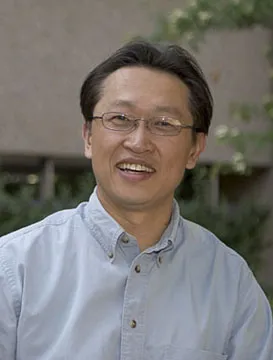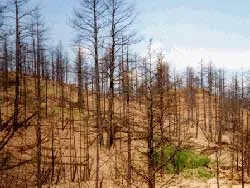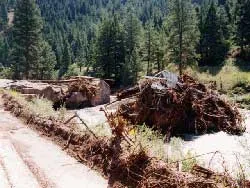Fei Chen - Senior Scientist
Teasing out land-atmosphere interactions

Fei Chen
Carlye Calvin, UCAR
If it weren't for a lackluster chemistry score on his college entrance exams, Fei Chen might have followed his father's wishes and become a doctor.
But he didn't make the cut for medical training. Instead he got a placement at the Nanjing Institute of Meteorology, a four-year college some 800 miles (1,300 kilometers) from Guiyang, his hometown in the mountains of southwest China.
"I had only a vague idea what meteorology was, but at least I didn't have to become a doctor," Fei recalls with a smile.
Luckily, meteorology turned out to be a good fit. After study in China, France, and the United States, Fei is now a scientist at NCAR, working on ways to improve forecasts of both weather and air quality by examining the multiple influences of soil moisture, soil temperature, and other land features on the behavior of the atmosphere.
Fei was in his second year of middle school in 1976 when Chairman Mao Tse Tung's death brought an end to the 10 years of upheaval created by China's Cultural Revolution. The contrast before and after that moment was striking.
He remembers having a lot of playtime during his early schooling. "The teachers could not teach serious things. If they taught too hard, they would be in trouble politically," Fei recalls.
When the Cultural Revolution ended, people started standing in line to buy textbooks to help their children catch up on schooling. "Overnight, there was huge pressure to study," as universities reopened and competition for admissions resumed. Fei wanted to be a journalist, pilot, or aerospace designer, but his father ruled out any choice vulnerable to political unrest.
"I wasn't that interested in meteorology at first," Fei admits. But studying clouds captured his imagination, so he took the exams for graduate school and qualified for study abroad. He had learned English, but now needed a crash course in French, since he was headed to France's Blaise Pascal University. He completed his Ph.D. there with a thesis on lightning in warm clouds and then accepted a postdoctoral fellowship at Rutgers, the State University of New Jersey.

On May 18, 1996, a wildland fire destroyed much of the town of Buffalo Creek, Colorado.
David Ondrejik, UOP COMET Program

The fire-denuded hillsides were ravaged weeks later by a devastating flash flood on July 12 that sent debris coursing through the creek. Debris was still piled along its banks a month later.
David Ondrejik, UOP COMET Program
In 1993 Fei joined a team at NOAA's National Centers for Environmental Prediction. Its task was improving national weather forecasts by refining the land-surface model running within NCEP's Eta weather prediction model. "It was a challenge at that time because few people realized then the importance of land-surface processes—how they influence the daily weather forecast," Fei recalls.
The effort was successful, but Fei wanted to explore broader
research topics, which brought him to NCAR's Research Applications Laboratory in 1997. Fei now leads a team within the lab's Land Surface–Atmosphere Interactions and Modeling Group.
At NCAR, Fei and colleagues figured out how the scarred earth from a large wildland fire could help produce intense rainfall over the same area six months later. They deployed a high-resolution computer model to look back at the causes of flash flooding over the denuded landscape of Colorado's Buffalo Creek burn site in 1996.
No longer hot from the fire, the burned area nonetheless produced considerable heating of the atmosphere. As expected, the bare land transferred more solar radiation back into the atmosphere as heat in comparison to the surrounding forest, whose trees and vegetation transformed more of that solar radiation into evaporation.
In the Buffalo Creek case, when shallow clouds moved in, Fei explains, the extra heating provided more lift over the burn site, causing the clouds to deepen into cumulonimbus, or storm clouds. The contrast between this "hot spot" and cooler surrounding terrain also kept the storm hovering over the burn area longer, dropping enough rain to cause the severe flood.
Lately Fei has been collaborating with colleagues in Hong Kong to model how urbanization inland of that harbor city is influencing local wind flow, to the detriment of Hong Kong's air quality. Houston, another one of Fei's study sites, has similar problems. In a study of Beijing, he's examining how the location of new trees on streets, parks, or greenbelt may influence whether rainfall reaches reservoirs for that thirsty city. Fei is also part of a multiagency group developing a new community land-surface model that's coupled into the NCAR-based Weather Research and Forecasting model.
Like many scientists, Fei feels inspired each day despite the demands of his profession: "I learn something new I didn't know yesterday." He's also inspired by developments in his homeland. Now a U.S. citizen, Fei enjoys traveling to China for work and family visits. "Each time I visit, I see changes," he says, noting that in the last decade he's witnessed more openness, including more political discussions.
by Zhenya Gallon
June 2005